Fall Bouquet |
|||||||||||||
 |
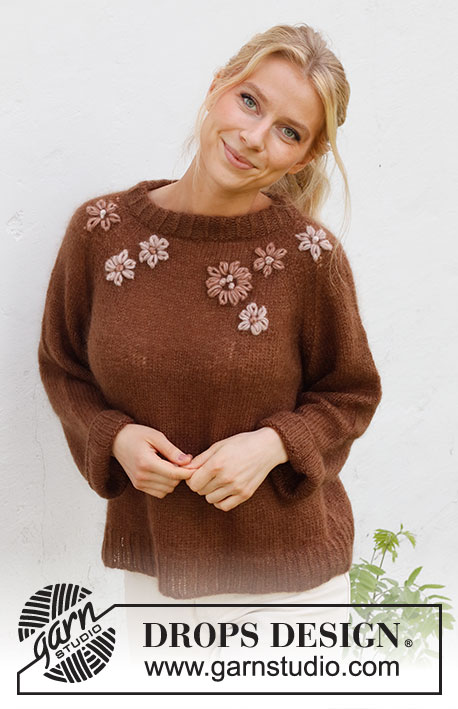 |
||||||||||||
Knitted jumper in 1 strand DROPS Brushed Alpaca Silk or 2 strands DROPS Kid-Silk. The piece is worked top down with raglan, embroidered flowers with French knots. Sizes S - XXXL.
DROPS 227-48 |
|||||||||||||
|
------------------------------------------------------- EXPLANATIONS FOR THE PATTERN: ------------------------------------------------------- PATTERN: See diagram A.1. INCREASE TIP (evenly spaced): To work out how to increase evenly, count the total number of stitches on the needle (e.g. 81 stitches) and divide by the number of increases to be made (e.g. 19) = 4.2. In this example, increase by making 1 yarn over after approx. each 4th stitch. On the next round knit the yarn overs twisted to avoid holes. RAGLAN: Increase 1 stitch, by making 1 yarn over, on each side of A.1 in the transitions between body and sleeves (= 8 stitches increased on the round). On the next round work the yarn overs twisted to avoid holes. The increased stitches are worked in stocking stitch. DECREASE TIP (for sleeves): Decrease 1 stitch on either side of the marker thread as follows: Work until there are 3 stitches left before the marker thread, knit 2 together, knit 2 (marker thread sits between these 2 stitches), slip 1 stitch as if to knit, knit 1 and pass the slipped stitch over the knitted stitch (2 stitches decreased). CASTING-OFF TIP: To avoid the cast-off edge being tight you can cast off with a larger size needle. If the edge is still tight, make 1 yarn over after approx. each 4th stitch at the same time as casting off; the yarn overs are cast off as normal stitches. ------------------------------------------------------- START THE PIECE HERE: ------------------------------------------------------- JUMPER – SHORT OVERVIEW OF THE PIECE: The neck and yoke are worked in the round with circular needle, from mid back and top down. The yoke is divided for the body and sleeves and these are continued separately, in the round. Flowers with French knots are embroidered onto the front piece to finish. NECK: Cast on 78-81-84-90-93-96 stitches with circular needle size 4 mm and 1 strand DROPS Brushed Alpaca Silk or 2 strand DROPS Kid-Silk. Knit 1 round, then work rib in the round (knit 1 twisted, purl 2) for 8 cm. This neck is folded double later. Knit 1 round where you increase 16-17-18-16-17-18 stitches evenly spaced – read INCREASE TIP = 94-98-102-106-110-114 stitches. Knit 1 round. Change to circular needle size 5 mm and insert a marker at the beginning of the round (= mid-back); the yoke is measured from this marker! YOKE: Work pattern as follows: Knit 12-13-14-15-16-17 (= half back piece), A.1 over the next 10 stitches (= raglan), knit 3 (= sleeve), A.1 over the next 10 stitches (= raglan), knit 24-26-28-30-32-34 stitches (= front piece), A.1 over the next 10 stitches (= raglan), knit 3 (= sleeve), A.1 over the next 10 stitches (raglan), knit 12-13-14-15-16-17 (= half back piece). Continue this pattern and on the next round begin to increase to RAGLAN – read description above. Increase like this every 2nd round a total of 21-23-25-28-31-34 times = 262-282-302-330-358-386 stitches. REMEMBER THE KNITTING TENSION! Continue working until the piece measures 19-21-23-25-28-31 cm from the marker on the neck. Divide for the body and sleeves on the next round as follows: Work the first 38-41-44-48-52-56 stitches (= half back piece), place the next 55-59-63-69-75-81 stitches on a thread for the sleeve, cast on 6-6-8-8-10-12 stitches (= in side under the sleeve), work the next 76-82-88-96-104-112 stitches (= front piece), place the next 55-59-63-69-75-81 stitches on a thread for the sleeve, cast on 6-6-8-8-10-12 stitches (= in side under the sleeve), work the last 38-41-44-48-52-56 stitches. The body and sleeves are finished separately. THE PIECE IS MEASURED FROM HERE! BODY: = 164-176-192-208-228-248 stitches. Continue with stocking stitch in the round for 27-27-27-27-26-25 cm. Try the jumper on and work to desired length (approx. 6 cm left to finished length). To avoid the following rib being tight, knit 1 round where you increase 25-25-27-29-33-37 stitches evenly spaced = 189-201-219-237-261-285 stitches. Change to circular needle size 4 mm and work rib (knit 1 twisted, purl 2) for 6 cm. Cast off with knit over knit and purl over purl – read CASTING-OFF TIP. The jumper measures approx. 56-58-60-62-64-66 cm from the shoulder down. SLEEVES: Place the 55-59-63-69-75-81 stitches from the thread on the one side of the piece on double pointed needles/short circular needle size 5 mm and knit up 1 stitch in each of the 6-6-8-8-10-12 stitches cast on under the sleeve = 61-65-71-77-85-93 stitches. Insert a marker thread in the middle of the new stitches under the sleeve. Work stocking stitch in the round for 3 cm, then begin to decrease under the sleeve – read DECREASE TIP. Decrease like this every 5½-5-3½-2½-1½-1 cm a total of 6-7-9-11-15-18 times = 49-51-53-55-55-57 stitches. Continue with stocking stitch until the sleeve measures 38-37-35-34-31-29 cm (shorter measurements in larger sizes due to wider neck and longer yoke). Try the jumper on and work to desired length (approx. 6 cm left to finished length). Knit 1 round where you increase 5-6-7-8-8-9 stitches evenly spaced = 54-57-60-63-63-66 stitches. Work rib (knit 1 twisted, purl 2) for 6 cm. The sleeve measures approx. 44-43-41-40-37-35 cm from the division. Cast off with knit over knit and purl over purl. Work the other sleeve in the same way. ASSEMBLY: Fold the neck double to the inside and sew down. To avoid the neck being tight and rolling outwards, it is important that the seam is elastic. EMBROIDERY: Embroider flowers onto the front yoke. FLOWERS - SHORT OVERVIEW: 1 or 3 French knots form the centre of the flowers. Chain stitches are worked around them for the petals. Flowers 1 to 6 = small flowers measuring 4.5 to 5 cm in diameter. Flower 7 = large flower measuring 6.5 to 7 cm in diameter. SMALL FLOWER: Embroider 1 French knot - see diagram A and diagram explanations – the knot is worked with a single strand. It is the centre of the flower. Cut and fasten the strand. Work chain stitches around the knot – see diagram B and diagram explanations – the chain stitches are worked with a double strand. Work 6 stitches around the centre, each stitch 1.5 - 2 cm long. Cut and fasten the strands. LARGE FLOWER: Embroider 3 French knots - see diagram A and diagram explanations – the knots are worked with a single strand. Work the knots close together, with a maximum diameter of 2 – 2.5 cm. They are the centre of the flower. Cut and fasten the strands. Work chain stitches around the knots - see diagram B and diagram explanations - the chain stitches are worked with a double strand. Work 11 stitches around the centre, each stitch 2 – 2.5 cm long. Cut and fasten the strands. Position the flowers as follows – the measurements are from the centre of the flowers: When pattern explains that the flowers should be embroidered to the right or to the left of the previous flower, it refers to the direction (right/left) as seen in the picture. Flower-1 is worked at the top of the left shoulder (as seen in the picture), 4 cm from the neck and with the French knot in the transition between the sleeve and A.1 – use pink sand for the French knot and clay for the petals. Flower-2 is worked to the right, 7.5 cm from flower-1 and 7.5 cm down from the neck – use clay for the French knot and pink marble for the petals. Flower-3 is worked to the right, 6 cm from flower-2 and 3 cm down from the neck – use clay for the French knot and pink marble for the petals. Flower-4 is worked on the right shoulder (as seen in the picture) 4.5 cm down from the neck and with the French knot in the transition between the sleeve and A.1 – use pink sand for the French knot and pink marble for the petals. Flower-5 is worked to the left, 6.5 cm from flower-4 and 4 cm down from the neck – use pink marble for the French knot and clay for the petals. Flower-6 is worked to the left, 9 cm from flower-5 and 12 cm down from the neck – use clay for the French knot and pink marble for the petals. Flower-7 is worked between flower-5 and flower-6 and 6.5 cm down from the neck – use pink marble for the French knot and clay for the petals. |
|||||||||||||
Diagram explanations |
|||||||||||||
|
|||||||||||||
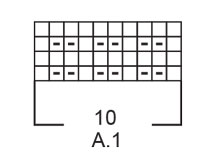
|
|||||||||||||

|
|||||||||||||

|
|||||||||||||
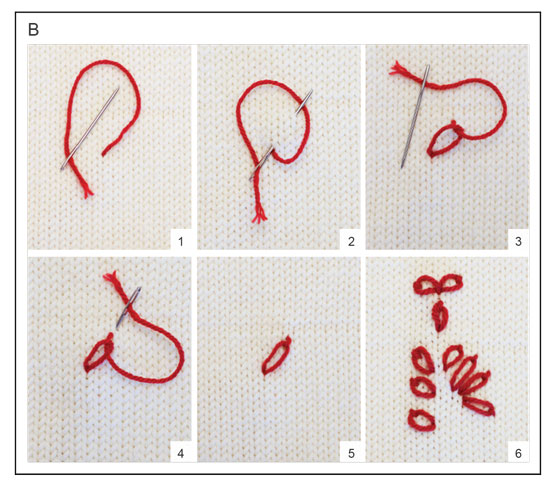
|
|||||||||||||
|
Have you made this or any other of our designs? Tag your pictures in social media with #dropsdesign so we can see them! Do you need help with this pattern?You'll find tutorial videos, a Comments/Questions area and more by visiting the pattern on garnstudio.com. © 1982-2024 DROPS Design A/S. We reserve all rights. This document, including all its sub-sections, has copyrights. Read more about what you can do with our patterns at the bottom of each pattern on our site. |
|||||||||||||








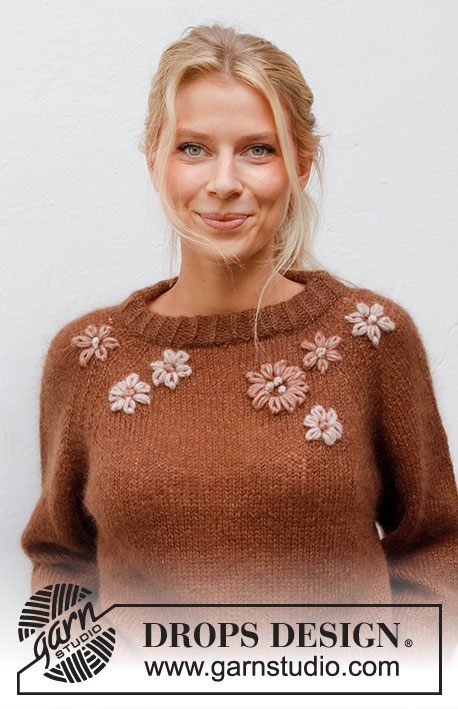
















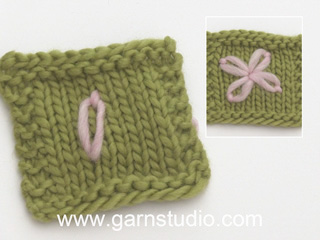



















































Comments / Questions (19)
Korjaus edelliseen viestiin: ongelma oli siinä että ajatteli että hihasilmukat ovat mallineuleen väliset silmukat kun niistä puhutaan erikseen hihana. Olisi ehkä syytä ottaa kokonaan pois kaarrokkeen alun jaosta hiha -sanat pois sulkeista niin ei tule sekaannusta. Ihan turha tieto kun osa silmukoista erotellaan hihaan mallineuleen silmukoista.
15.02.2023 - 20:58Koossa L on virhe raglanlisäysten määrässä. Pitäisi olla 30 kertaa lisäykset joka 2.kerros että tulee hihoihin se 63 silmukkaa.
15.02.2023 - 19:06Hvilket garn er blusen på billedet strikket i?
12.02.2023 - 07:16DROPS Design answered:
Hei Anni. Den er strikket med 2 tråder DROPS Kid-Silk, farge 35 sjokolade. mvh DROPS Design
13.02.2023 - 11:59Is the sweater in the pictures 2 strands of kid silk?
09.02.2023 - 01:14Kan det virkelig passe, at der kun skal bruges 5 nøgler garn til hele trøjen? Synes det er vildt hvis der kun skal bruges ialt 250 gr. til en str. XL, som jeg skal strikke. Mvh
27.10.2022 - 14:08DROPS Design answered:
Hei Pia. Jo, garnmengden stemmer, men du trenger kun 175 gram i str. XL. DROPS Brushed Alpaca Silk er et mohair lignende garn, lett og luftig og har en lang løpelengde, 25 gram er ca 140 meter. Du trenger 175gram = 7 nøster = 980 meter garn. Om du skulle ha strikket denne genseren i en mer "vanlig" garnkvalitet, som f.eks DROPS Nepal, som har en løpelengde på 75 meter på 50 gram, ville du ha trengt 650-700 gram. Ønsker du å ha litt ekstra garn, er det salg på DROPS Brushed Alpaca Silk, og noen steder selges det fra kr. 16,- til 24,-. mvh DROPS Design
31.10.2022 - 08:59Kumpaa lankaa kuvan neuleessa on käytetty?
02.03.2022 - 14:03Bonjour Est ce que l’on fait une couture sur l’endroit où bien sur l’envers de l’ouvrage avec la laine brushing alpaga ? Quel est le côté le plus discret ? Merci
26.01.2022 - 15:05DROPS Design answered:
Bonjour Mme Perriot, on plie le col sur l'envers/sur l'intérieur du pull, la couture sera sur l'envers (comme le montre cette vidéo. Bonne continuation!
26.01.2022 - 17:12Jeg er nået til bærestykket i str large: 2. Omgang. I 1. Runde hvor jeg strikkede: 14R, tag ud, A1,tag ud, 30R, tag ud, A1, 3R, tag ud, A1, tag ud, 30R, tag ud, A1, tag ud, 3T, tag ud, A1, tag ud, 14 R. Hvordan er systemet det næste 50 omgange? Jeg kan se at jeg skal tage ud hver anden omgang. Men er kommer jo 8 masker mere før hver omgang og så duer det første system ikke. Hjælp.
23.01.2022 - 17:33The english description says to cast on x stitches with 1 strand Brushed Alpaca Silk OG 2 strands Kid Silk... I think that's supposed to mean "or" since I was really confused of you didn't translate that word from norwegian and I was supposed to use both Brushed Alpaca Silk and 2 strands of Kid Silk
10.11.2021 - 23:20DROPS Design answered:
Dear Hella, thanks for noticing, you are right, you work either with 1 strands Brushed Alpaca or 2 strands Kid-silk - pattern has been edited. Happy knitting!
11.11.2021 - 09:12Volgens mij is de kleur die bij het patroon wordt aangegeven niet juist.
07.10.2021 - 10:45